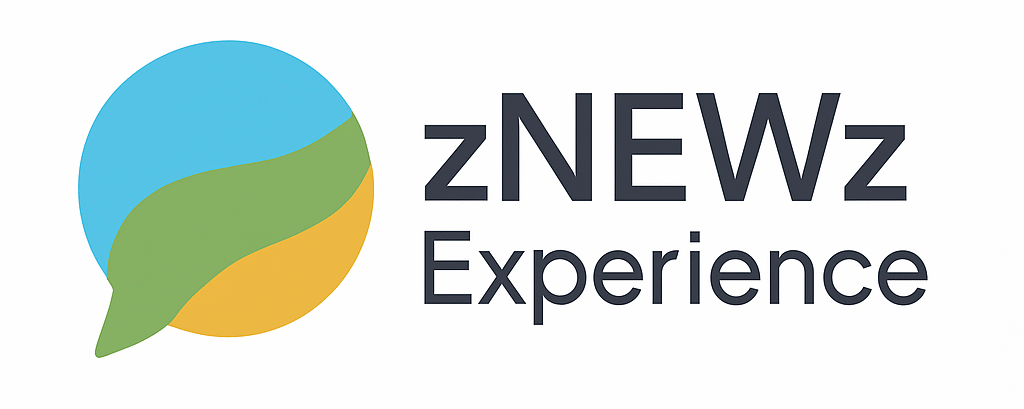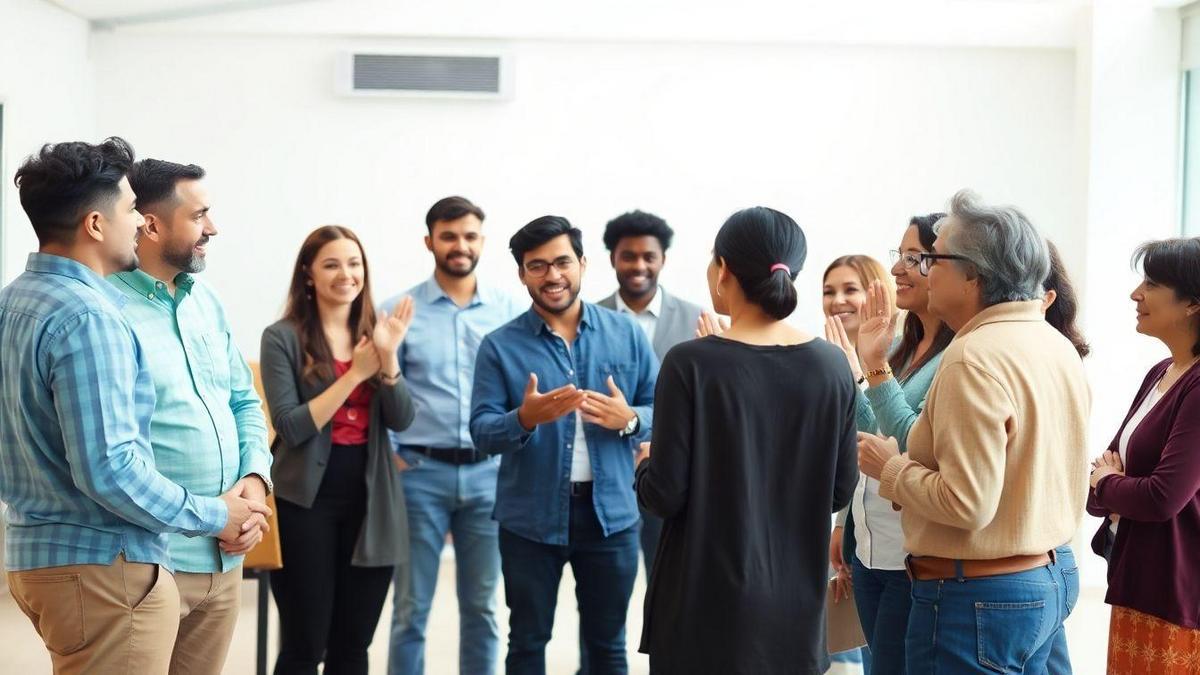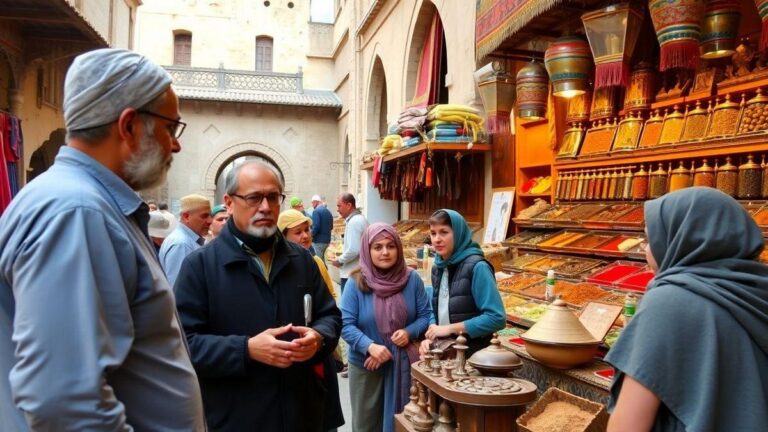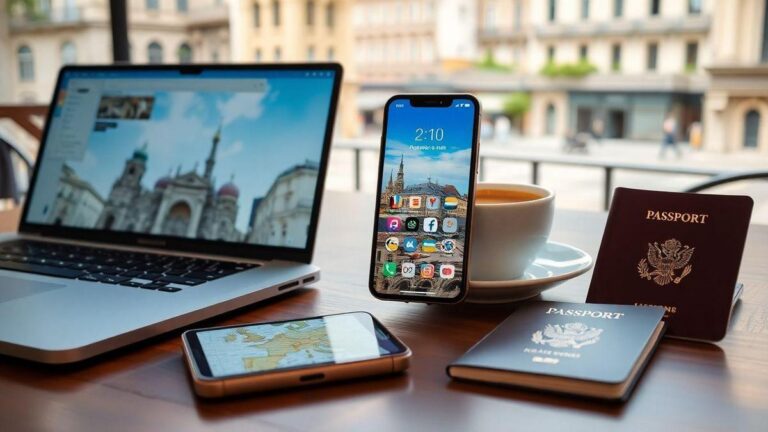How to use body language effectively when language barriers exist
Understanding how to use body language effectively when language barriers exist can be a game changer in communication. In this article, you will discover the importance of body language across different cultures and learn how various gestures can mean different things. You’ll also find tips to build rapport and listen actively, making conversations smoother. Let’s dive into the world of nonverbal communication and see how you can chat and connect better, no matter where you are!
Key Insights
- Use friendly gestures to show you care.
- Maintain eye contact to build trust.
- Smile to create a welcoming atmosphere.
- Use simple hand signals to help explain.
- Be patient and take your time while communicating.
Understanding Nonverbal Communication in Different Cultures
The Importance of Body Language Tips
When you’re talking to someone from another culture, body language can convey much more than words. It’s like a secret language that everyone speaks, even if they don’t share the same words. Think about it: a smile can warm hearts, a nod can show agreement, and crossed arms might signal defensiveness. Knowing these signals is key to connecting with others.
Here are a few body language tips to keep in mind:
- Eye Contact: In some cultures, looking someone in the eye shows respect; in others, it can be seen as rude.
- Personal Space: Some people like to stand close, while others prefer a bit of distance. Respecting this can make conversations smoother.
- Facial Expressions: A smile is usually a sign of friendliness, but make sure it’s appropriate for the situation.
Cultural Differences in Gestures
Gestures can mean different things in different places. For example, giving a thumbs up is a sign of approval in many countries, but in some places, it can be offensive! Here’s a quick table showing a few common gestures and their meanings around the world:
| Gesture | Meaning in the U.S. | Meaning in Other Cultures |
|---|---|---|
| Thumbs Up | Good job! | Offensive in some Middle Eastern countries |
| Peace Sign | Peace or victory | Can be rude if done with palm facing inward in the U.K. |
| Nodding | Yes | In some cultures, it can mean no |
How to Use Body Language Effectively When Language Barriers Exist
When you face language barriers, body language becomes even more important. Here are some tips on how to use body language effectively when language barriers exist:
- Be Observant: Watch how the other person reacts to your gestures. Their body language can guide you.
- Use Simple Gestures: Stick to basic movements that are likely to be understood, like waving or pointing.
- Stay Relaxed: If you seem anxious, the other person might feel the same way. Relax and be friendly!
- Ask for Feedback: If you’re unsure, don’t hesitate to ask if they understand what you mean. A simple thumbs up can go a long way!
By using these tips, you can break down barriers and connect better with others, even when words fail.
Building Rapport Through Effective Body Language
Using Visual Cues in Conversation
When you talk to someone, your body speaks just as loudly as your words. Visual cues like eye contact, facial expressions, and gestures can really help you connect. For example, when you nod while someone is talking, it shows you’re listening and engaged. This can make the other person feel valued and understood.
Here are some visual cues to keep in mind:
- Eye Contact: It shows interest and honesty.
- Smiling: A warm smile can break the ice and create a friendly atmosphere.
- Open Posture: Avoid crossing your arms; instead, keep your arms relaxed at your sides.
- Gestures: Use your hands to emphasize points, but don’t overdo it.
Embracing Silence as a Communication Tool
Silence can be powerful. It gives both you and the other person time to think. Sometimes, a pause can say more than words ever could. For instance, if you ask a question and wait for an answer, it shows you value their thoughts.
Here’s how to use silence effectively:
- Pause Before Responding: This shows you are considering their words.
- Give Space for Reflection: After asking a question, let them take their time to answer.
- Use Silence to Convey Emotion: Sometimes, not saying anything can express feelings better than talking.
Overcoming Language Barriers with Active Listening Skills
Active listening is key when language barriers exist. This means you’re not just hearing words; you’re trying to understand the message behind them.
Here are some tips for active listening:
| Tip | Description |
|---|---|
| Repeat Back | Paraphrase what they said to show you understand. |
| Ask Clarifying Questions | If something is unclear, don’t hesitate to ask. |
| Show Empathy | Acknowledge their feelings and experiences. |
By using these skills, you can build a bridge over language gaps and connect on a deeper level.
Practical Tips for Using Gestures in Communication
Common Gestures and Their Meanings
Understanding gestures can help you connect better with others. Here are some common gestures and what they usually mean:
| Gesture | Meaning |
|---|---|
| Thumbs Up | Approval or agreement |
| Wave | Greeting or saying goodbye |
| Handshake | Welcome or agreement |
| Pointing | Indicating something specific |
| Nodding | Yes or agreement |
| Shaking Head | No or disagreement |
These gestures can change based on culture, so it’s wise to be aware of your surroundings. For example, a thumbs-up is a positive sign in many places, but in some cultures, it can be offensive. Always keep an open mind and be willing to learn!
Adapting Your Body Language for Different Situations
Your body language should match the situation. Here are some tips to help you adapt:
- In a Job Interview: Stand tall, maintain eye contact, and offer a firm handshake. This shows confidence.
- During a Presentation: Use open gestures to engage your audience. Don’t cross your arms; it can seem defensive.
- At a Social Gathering: Smile and use friendly gestures, like waving, to invite conversation.
Remember, the key is to read the room. If people seem relaxed, mirror their body language to make them feel comfortable. If they’re serious, tone it down a bit. Adjusting your body language can help you fit in and communicate better.
Enhancing Your Communication Skills with Effective Body Language
Using body language effectively can break down barriers, especially when language barriers exist. Here are some ways to enhance your skills:
- Practice Active Listening: Nod and maintain eye contact to show you’re engaged.
- Be Mindful of Your Space: Respect personal space, as getting too close can make others uncomfortable.
- Use Facial Expressions: A smile can go a long way in showing warmth and friendliness.
For instance, if you’re in a conversation with someone who speaks a different language, use gestures to express your thoughts. Point to objects, mimic actions, or use your face to convey emotions. This can help bridge the gap and make communication smoother.
Frequently Asked Questions
What is body language?
Body language is how you use your body to show feelings. It includes gestures, facial expressions, and posture.
How to use body language effectively when language barriers exist?
Use clear gestures. Nod your head, smile, and use open arms. These help show you are friendly and ready to communicate.
Can I rely only on body language?
No, you should not rely only on body language. It’s a great tool, but words are still important. Use both for better understanding.
What are some good gestures to use?
Some good gestures are thumbs up, waves, and pointing. These are easy to understand and can help share your message.
How can I improve my body language skills?
Practice in front of a mirror. Watch how others use body language and learn from them. The more you practice, the better you’ll be!

Hey, I’m Paula — traveler, language nerd, and the curious mind behind znewz.com. I’ve always believed that real connections happen through words, gestures, and shared experiences — not algorithms. That’s why I created this blog: to share travel stories from around the world and explore how language helps us connect in ways that AI still can’t. Whether I’m getting lost in a tiny town or striking up a chat in a language I barely know, I’m here to show that sometimes the best moments happen when tech takes a back seat.







